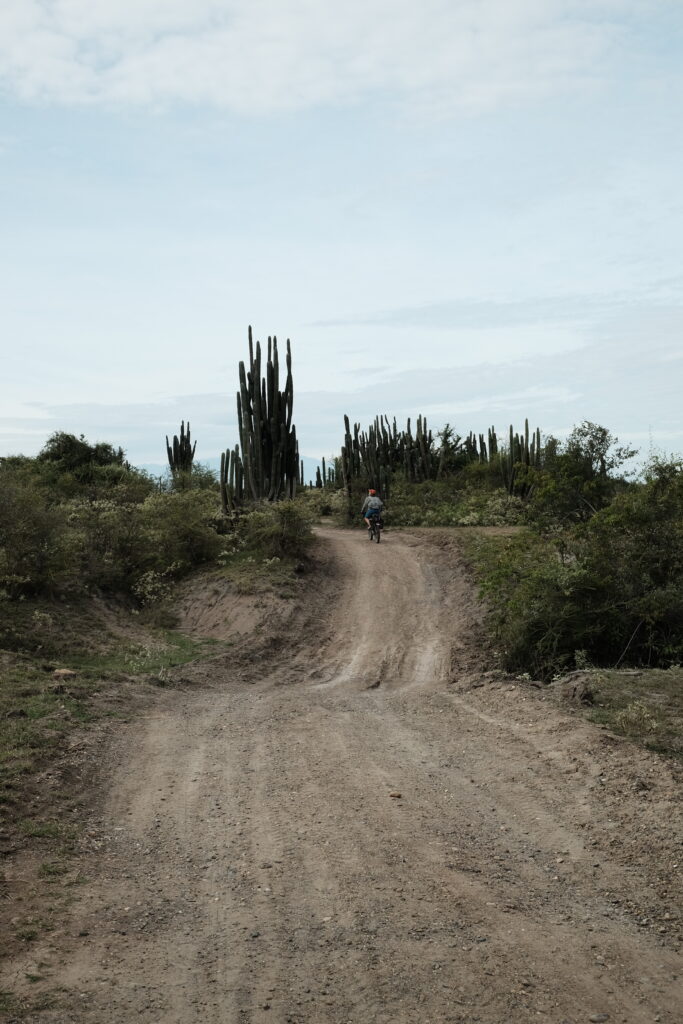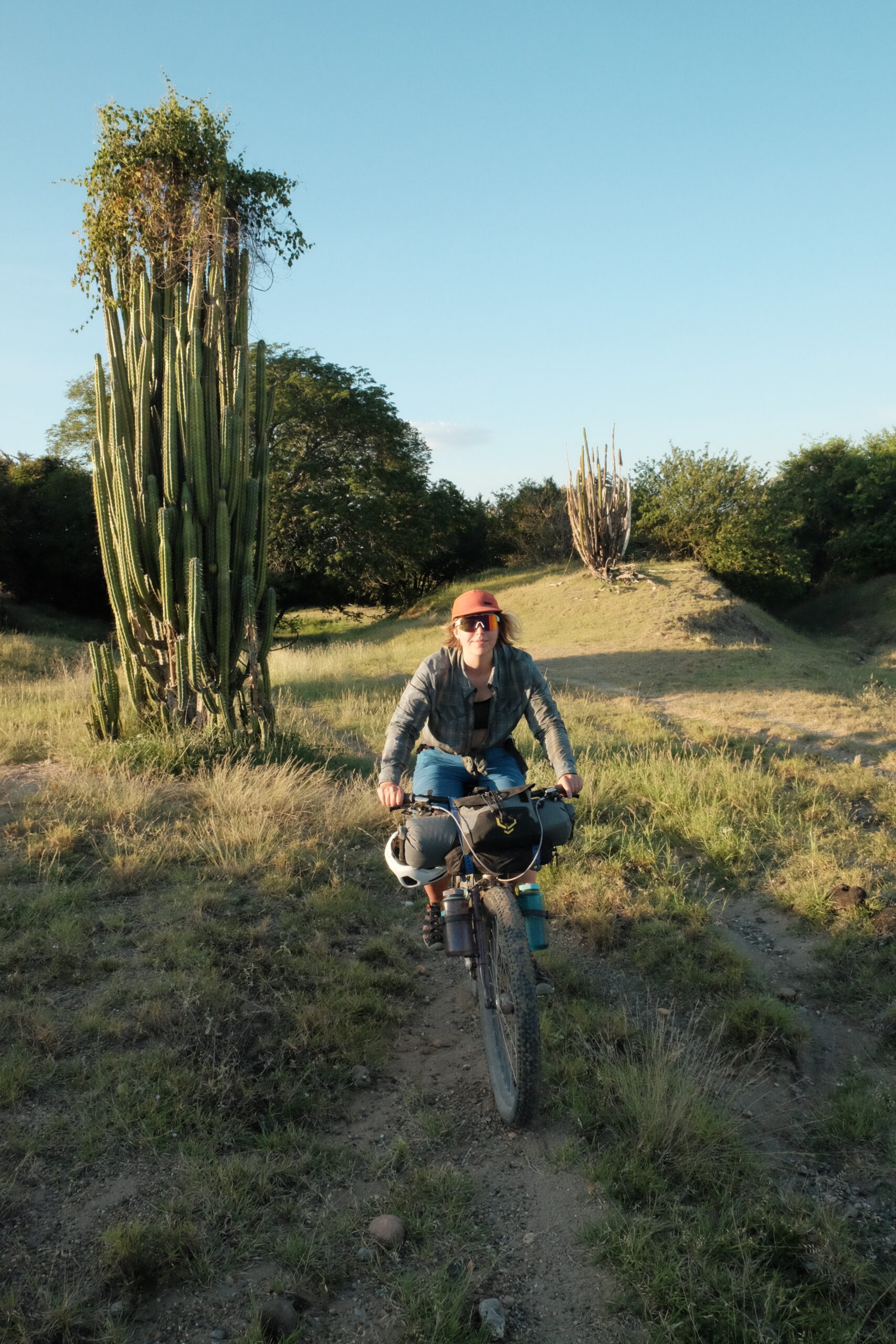This post describes our journey from the coffee covered hills of San Antonio, to the city of Neiva, down on the Magdalena River – El Infierno (due to the temperatures) according to our host in San Antonio, Juan Carlos.
First stop on the route down to the flatlands was Chaparral, only a short afternoon’s ride from San Antonio, down at 800m or so of elevation. Already, the temperatures were a bit much for these two gringos. As we did a lap of the central square in search of some food, we were hailed by a young man walking purposefully towards us. This was Fabian, who had been forewarned of our arrival by both Eduardo and Juan Carlos. Onto the next stage of our impromptu package holiday!
We had heard from Eduardo that there were these impressive caves nearby – las Cuevas de Tuluni – and, not knowing anything about them really, we just said that we would be interested in seeing them. This is where Fabian came in – he runs a local guiding business called Egeria Travel which does guided tours of the caves, as well as other outdoor activities in the area.
We were led just round the corner to his office (which just happened to be right next to a hotel with air conditioned rooms, winning) and sat down to be told the plan. I will admit to balking slightly and having serious misgivings when we were quoted a price of 276 000 COP (about £50) each for the day. It felt like we had lost control of our plans for our trip as we were put in the awkward position of feeling unable to refuse. Oh what the hell, we thought. Let’s just roll with it this once…and I’m so glad that we did!
That evening, Fabian gave us a tour of the central square along with a potted history of the place. Chaparral is mostly famed for being the birthplace of 3 Colombian presidents, all in the pre-democracy era, and there is a wall with statues of each of them in the square. More recently however, and similarly to San Antonio, the town was a stronghold of the FARC and essentially off limits to outsiders. Although the shoots of recovery from that time are there, it is still struggling to overcome its reputation and attract much needed government and wider investment. So not feeling such dirty tourists after all, we enjoyed playing our part in the beginning of this new chapter for the area.

Cave day started early with a 6am wake-up call – turns out visiting these caves was much more involved than we thought! First item on the agenda was a huge two course breakfast from a restaurant round the corner (all food was included in the price). Next, we piled into a mates car and drove the 8km down to the river Tuluni and along a non-descript dirt track. This river and these caves were sacred to the indigenous people of the area. On this trip, we’ve often witnessed the power of water to wash away roads and hillsides, so it was unsurprising that there were cave systems in the area, but what we experienced that day was much more spectacular than either of us expected.
(El here taking over while Liam packs his panniers.)
One thing I don’t understand is how the Colombians aren’t world famous for their ankle stability. We waded along and across many rivers on our caving adventure and while we were both struggling, our guides seemed totally unphased. It seemed like open lower leg fracture territory to me but then I was slightly handicapped by my sandals, which it turns out are not great river walking shoes after all. Sob. Thankfully, every now and then we got some respite from the ankle rolling with some body rafting down the river. Buoyed by our large life jackets we just sat down, leaned back and bobbed feet first down river.


Shortly after the above photos were taken we waded into a cave that smelled strongly of guano. It was a full on first caving experience for Liam and I think if I hadn’t been caving before as a teenager, I would have had a panic attack and left! The cave was full of Guacharos, the only nocturnal fruit eating birds in the world. Well reader, they live in caves and their sound echoing through the darkness of a cave makes you feel like you are walking into hell. It wasn’t a hugely pleasant experience, although I can appreciate the uniqueness of their ecology. After surviving the main Guacharo chamber we squeezed through a small space, baptised ourselves in an underground waterfall (aka washed the guano off ourselves!) and then floated through narrow corridors in chest high river to see the millennia old sea creatures fossilised in the rock. Then it was back out through the gates of hell, sorry, Guacharo chamber. I’ve never been so happy to see daylight again.
We waded and walked a little further down river towards ‘La Catedral’ a huge opening in the rock carved by the river. We would be floating through here Fabian instructed us! It was incredible. Breathtaking to be floating under the high ceiling of solid rock. We then got to eat our packed lunches in this massive monument to Mother Nature’s force. Lunch was packed in a banana leaf and Fabian and his friends had even brought along home made lemonade and guacamole!


As we walked out from our caving day we experienced the baking heat of the day for the first time, although the hard hats and life jackets probably didn’t help! We’d been quite blissfully unaware of the inferno as we sploshed around underground. Decompressing on the grass outside a finca, the matriarch of the house asked if we wanted some aqua de panela, made with sugar cane from the adjacent field. This time it was cold and green, like little video game characters restoring our health bars, this stuff is just what you need to get out of a hole. But this wasn’t the end of our guided tour, Fabian was showing us the full Colombian experience and so after a trip to a man-made waterfall (constructed when they built the canal to feed the paddy fields of the area) the day ended at a roadside bar with a jug of guarapo de pina: fermented pineapple juice sweetened with panela and topped off with two bottles of lager! Surrounded by Fabian and his friends (two other guides Maria and Milton), plus the driver and his partner with Latin music blaring out the speakers we were exhausted and content. What a ‘rest’ day!
From Chaparral we spent three days riding up the Magdalena river, down into the inferno and through the Tatacoa desert. In Colombia it seems like no matter how far you’ve ridden downhill, you can still go even lower, even closer to sea level. This was quite the stage for watching how the landscape and habitat changed in response to the altitude and temperature. We rode past paddy fields flush with water into arid fields within the course of a day.
When I’m at home and I can do nothing, I love the heat, but when I have to move or put in any degree of effort I really suffer. I took the opportunity to dunk myself or my shirt into every half inviting river we passed. We spent the first night in Natagaima, which is a very forgettable roadside town.









After Natagaima we caught a ferry across the Magdalena river, Colombia’s main river. That morning we passed by many farms and houses which seemed owned by some of the few remaining Pijao people. Seemed like a pretty raw deal to me, for these indigenous people to be violently forced from their homes and left with some small patches of arid, sun scorched land.



The tracks were pretty bumpy and it was a slow and sweaty morning. By the time we rolled into lunch we looked like people who needed a second helping of juice! We loaded up with water, including filling my 2l reserve platypus and tootled off for an ice cream to let the heat of the day pass before heading out to the desert to wild camp.

Tatacoa isn’t technically a desert, it’s a tropical dry forest. Pedantry aside it is the second largest arid area in Colombia and it certainly looked like a desert to us as trees were replaced with cacti and dirt roads replaced with sand. The name Tatacoa was given by the Spanish in reference to the rattlesnakes – thankfully the only one we saw was a large fibreglass one in a tourist park! The desert is home to many glamping and festival sites – why?! It’s such a unique ecosystem, why ruin it with tawdry tat and 20ft high plastic rattlesnakes?
We’d heard that the northern part was less touristy and Liam had plotted us a singletrack route through using a combination of heatmap and OSM data. By the time we rode into the desert proper, we’d been riding in the heat for almost two days and I was starting to struggle. As soon as the tent was pitched I made up some electrolyte drink. As the temperature dropped and we pitched the tent we were treated to a beautiful sunset. Far from any light pollution the night sky was incredible, I saw a shooting star and Liam rolled his bike over a cactus trying to use it as a tripod extension! (Luckily, the sealant did its job.)







The electrolytes and sticky night in the tent seemed to allow me to recover, and the following morning, we rolled out of the grey desert and into the red desert. Crossing a small river that had a tiny amount of flowing water remaining, I threw myself into it, drenching my shirt and rinsing my clammy skin. I must have looked quite the sight! We passed glamping sites and Martian-esque landscapes as we weaved our way through, eventually crossing a proper river which seemed to signal the end of the arid zone. We made it to civilisation in time for almuerzo (again with seconds of juice, we must have looked parched). We are not obsessed with getting lunch out, but the South American two course lunches are both excellent value and a hearty feed. The days we have to crack out bread and tinned sardines aren’t quite the same! All that was left was a few hours on tarmac to Neiva for resupply, cold showers and laundry. Machine washed clothes have never felt so good.








Next up, the road to San Agustin, the archeological capital of Colombia.


Proper adventurers, I am loving this!
We’re loving following your blog guys. We’re a few months behind you, about to ride into the Tatacoa dessert! It’s been really helpful for us – you’re our guinea pigs!! Keep it up xx
Thanks! Glad to hear the blog is proving useful. Have fun in the desert and watch out for those sand flies!